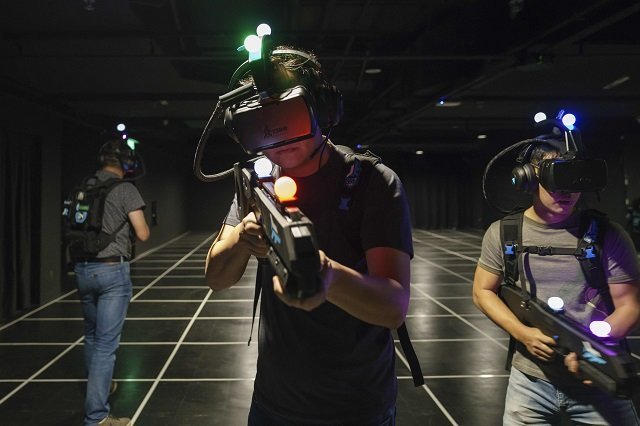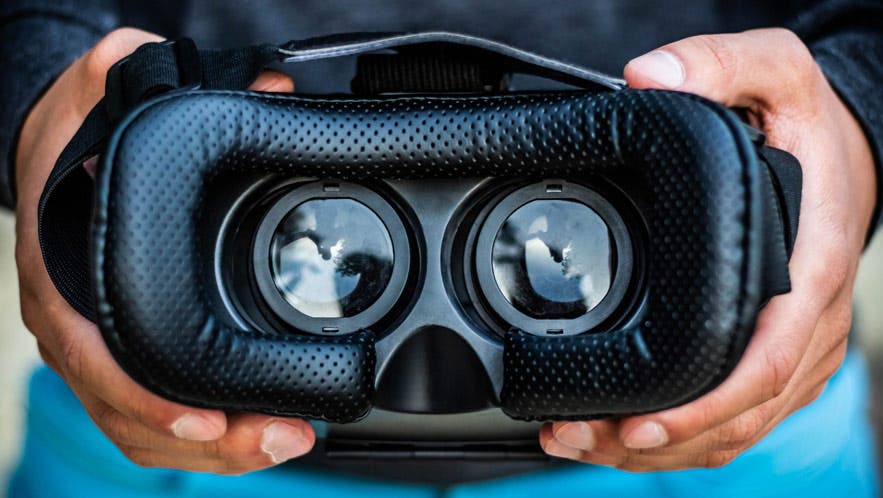Virtual Reality (VR) environments have traditionally been excluded from educational settings because VR equipment is prohibitively expensive. These weapons have only been used for military purposes and in research laboratories over the past 50 years. The focus of research during that period was predominantly on technological issues: the development of VR environments and hardware as well as software. Educators have defined a virtual world as any kind of educational experience that presents the user with visual and auditory stimulation. Several reviews have emphasized both traditional computer graphics on a monitor and 2D displays as a means of teaching on these topics. The low-immersion VR category encapsulates this concept of virtual worlds.
Here are seven healthy tips for a safe VR experience:

1. Read the headset instructions and safety warnings carefully
Regardless of how you usually behave when it comes to instructions, make sure you read the instructions and health and safety warnings that come with your VR headset in the least. What is the reason? One of the reasons you need to follow proper headset setup and use guidelines is to make sure you get the most out of your headset. Injuries and adverse effects such as nausea and dizziness can be prevented by using the device properly from the beginning. Additionally, information may be included about certain health conditions and medications that may increase the likelihood of nausea and dizziness when you use a VR headset.
It is also recommended that you use the VR headset first while seated so that your brain can adapt to the game and potentially decrease your risk of feeling dizzy and nauseated. Ensure that the room is well ventilated as well. When you are dizzy or feel sick to your stomach from wearing the headset, you can use this method to avoid nausea or recover more quickly. These negative side effects will only be exacerbated by a hot, stuffy room.

2. Start with a stable environment
- Sitting Down and Playing.
In order to get the most out of VR, the best place to start would probably be by sitting down on a chair and starting from there.
Since they feel more grounded, it is significantly less likely they will get nauseous than if they were standing up.
- Standing Up with a Little Help from a Friend
It’s important that you (to begin with) stand next to the new player if they desire to begin using VR standing up.
Put your hand on their shoulder whenever they feel uncomfortable (announce this beforehand!). The system works so well that you’ll be pleasantly surprised.
Again, it provides the player with an increased sense of stability.

3. To get a feel of VR, try it briefly at first.
Keep a VR headset or game on for 5 minutes at a time when you are testing a new device or game-or even less if you experience symptoms like dizziness, nausea or blurred vision. Getting to know how you feel after trying out a new exercise machine is the same thing. In real life, our brains are accustomed to focusing on the surroundings. Because Virtual Reality looks like it is far away from your eyes, your brain is fooled into believing this distance is really not there. As you gradually spend more time in the VR headset, you can lessen nausea and dizziness and make your transition more comfortable and less challenging.
4. Breaks are important.
While playing any video game, you will benefit from frequent breaks so you won’t get tired from your muscles or your eyes. In virtual reality, you can hurt your back, so the last thing you want to do is have to explain to your boss why you are unable to work. It may also be helpful to take regular breaks while in VR to prevent nausea and dizziness. It may take a few moments to realize that you have been affected until you take the headset off. For this reason, setting a timer on your phone can help remind you to take the headset off and check in with yourself. Regardless of whether you feel fine, walk around, get some fresh air, and take a few minutes to calm yourself down before you put the outfit back on. For every 30 minutes of VR play, manufacturers recommend taking a break of 10 to 15 minutes, even if you don’t feel you need it.

5. If you are sick, avoid using virtual reality.
To maintain physical stability and balance, you need healthy ears, eyes, sinuses, and brains. Utilizing a VR headset when you have a cold, sinus infection, headache, eye issue, upset stomach, or other medical condition could make nausea worse. Please consult prior to using the headset if you suffer from any chronic health conditions, such as eye problems, balance issues, or ear problems.
6. To prevent or relieve VR sickness, take Dramamine
Try Dramamine®-N Multi-Purpose Formula if you feel sick after playing VR games. It was developed to stop nausea and vomiting caused by gaming and other activities. If you get nauseated when first using the VR headset, you can also take a dose 30 minutes before you play.
If you are experiencing nausea related to VR and video games, try Dramamine®-N Long Lasting Formula. It lasts up to 24 hours. To prevent nausea, dizziness, and vomiting during gaming, adults should take one dose 30 minutes prior to starting play.
For advice on the next step, consult your doctor if the symptoms persist or do not go away. If you have a sick child, you should not play virtual reality or video games until your doctor has cleared you.

7. Discontinue it’s use if these symptoms are noticed
Occasionally, individuals (about one in four thousand) may experience extreme dizziness, seizures, eye or muscle twitching, or blackouts triggered by light flashes or patterns, even if they do not have a history of seizures or epilepsy. The majority of these seizures occur in children under the age of 20. It is highly recommended that people experiencing any of the above symptoms discontinue using the headset and see a doctor. Before using the headset, anyone with a history of seizures, loss of consciousness, or other epileptic symptoms should consult with a physician.
Conclusion
We can soon expect a new generation of immersive virtual reality serious games to have a significant impact on many learning and training processes. VR learning processes can be boosted by presence as well as immersion thanks to the advancements in VR technology. The fact is that a wealth of research must be done to introduce these changes at all stages of the learning process: from designing strategies to evaluating key factors.





